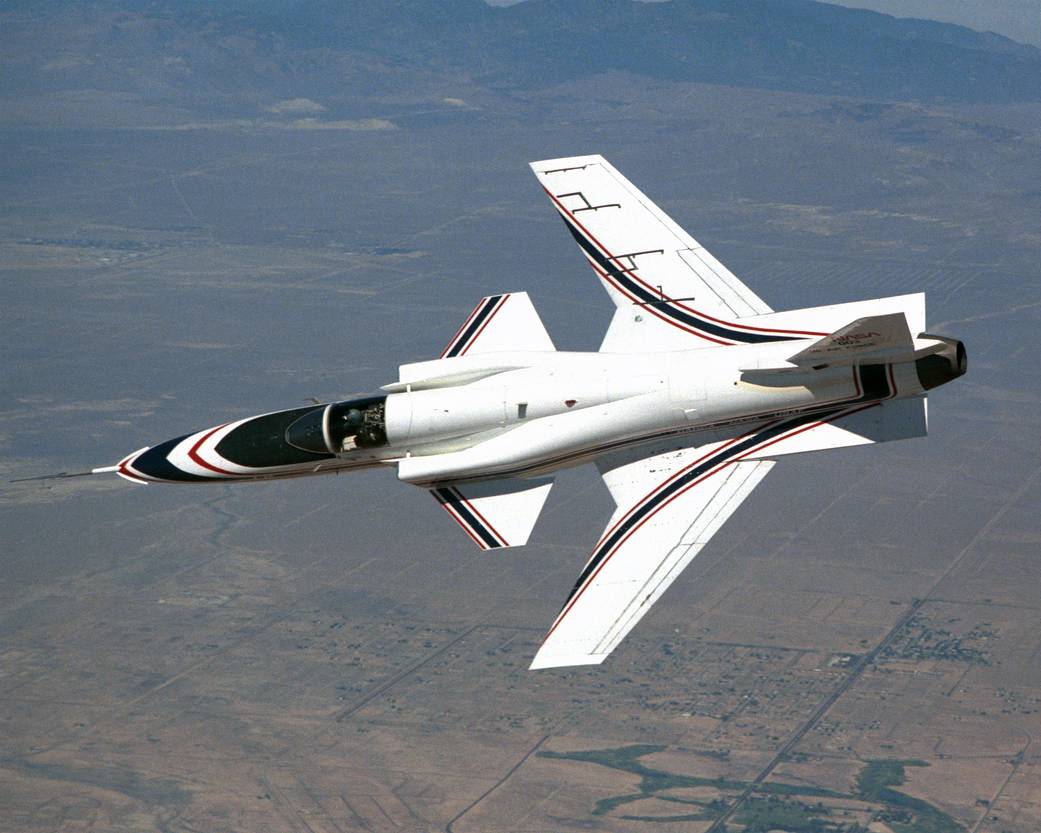Two X-29 aircraft, featuring one of the most unusual designs in aviation history, were flown at the NASA Ames-Dryden Flight Research Facility (now the Dryden Flight Research Center), Edwards, CA, as technology demonstrators to investigate advanced concepts and technologies. The multi-phased program was conducted from 1984 to 1992 and provided an engineering data base that is available in the design and development of future aircraft.
The X-29 almost looked like it was flying backward. Its forward swept wings were mounted well back on the fuselage, while its canards horizontal stabilizers to control pitch were in front of the wings instead of on the tail. The complex geometries of the wings and canards combined to provide exceptional maneuverability, supersonic performance, and a light structure. Air moving over the forward-swept wings tended to flow inward toward the root of the wing instead of outward toward the wing tip as occurs on an aft swept wing. This reverse air flow did not allow the wing tips and their ailerons to stall (lose lift) at high angles of attack (direction of the fuselage relative to the air flow).
The concepts and technologies the fighter-size X-29 explored were the use of advanced composites in aircraft construction; variable camber wing surfaces; the unique forward-swept wing and its thin supercritical airfoil; strake flaps; close-coupled canards; and a computerized fly-by-wire flight control system to maintain control of the otherwise unstable aircraft…Learn more
X-29 #82-003 was transferred to the National Museum of the United States Air Force in Dayton, Ohio in the later part of 1984.



























